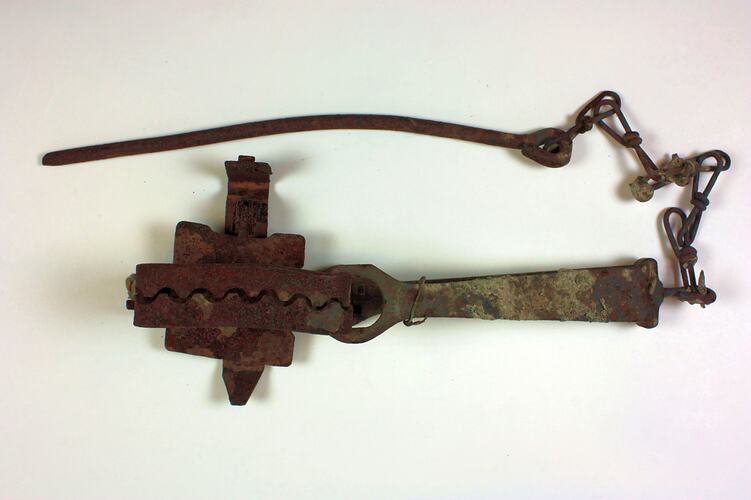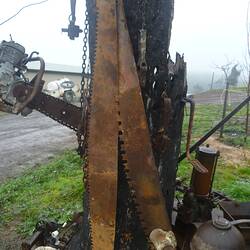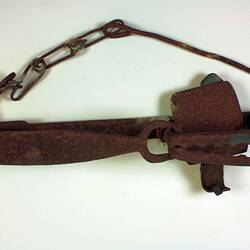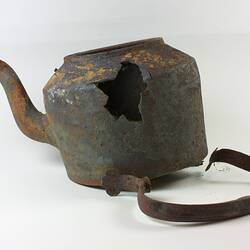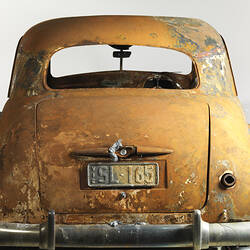Summary
This rabbit trap was used for many years to catch rabbits in the Strathewen area, northeast of Melbourne. It was kept in the shed of the old Sparks family homestead in Strathewen, one of many objects no longer in use but still too good to throw out. Rabbiting was a common feature of farming life: Ian McKimmie, a descendant of the original settlers, recalls catching rabbits as a boy and selling them to a local butcher. He also remembers family stories of trapping rabbits for food during the Great Depression of the 1930s.
On Black Saturday, 7 February 2009, the homestead and its outbuildings were all destroyed by the Kilmore East fire as it came over Sugarloaf Hill.. Ian retrieved the trap from the ruins and included it in the objects he hung from a burned tree stump on the family property. In doing so he was creating a private memorial to the bushfires of Black Saturday, but also to the generations of his family who had lived and farmed in the area for over 150 years.
Physical Description
Steel rabbit trap, burned and rusted, with accretions from another object on upper face. A long chain attached to a stake was used to fix the trap to the ground.
Significance
After the bushfires of Black Saturday many people created informal memorials out of burned objects. They mark the destruction of homes and the loss of lives, but they also express resilience and a need to create something meaningful out of the devastation. Where other people created mosaics or sculptures, Ian McKimmie assembled burned objects that evoked the farming past of his family in Strathewen, paying tribute to generations who had harvested the trees, farmed the land and fought earlier fires.
More Information
-
Collection Names
-
Collecting Areas
-
Acquisition Information
Donation from Mr Ian McKimmie, 06 Oct 2010
-
User
Mr Ian McKimmie, Strathewen, Victoria, Australia, 07 Feb 2009
-
Classification
-
Category
-
Discipline
-
Type of item
-
Overall Dimensions
290 mm (Width), 130 mm (Depth), 90 mm (Height)
Overall dimensions for the body of trap.
-
Dimensions
520 (Length)
Length of attached chain and spike
-
Keywords
Black Saturday Bushfires, 2009, Bushfires, Farms, Rabbiting, Rabbit Traps
